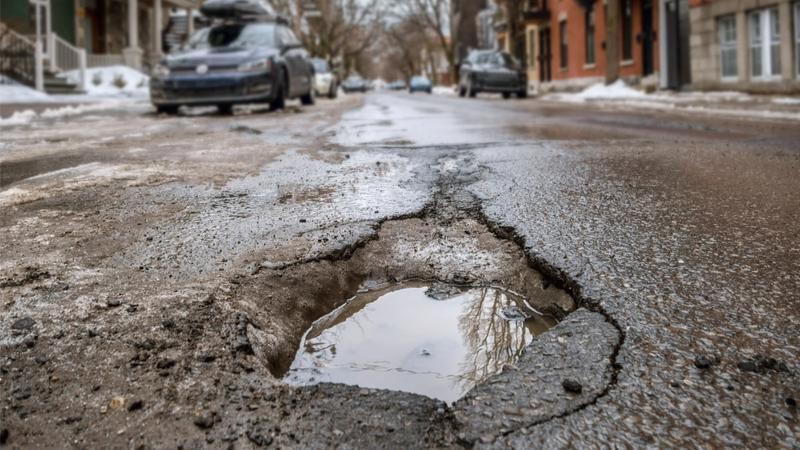- There are 108,000 km of roads in poor condition and another 48,000 km in very poor condition in Canada.
- Nova Scotia and Quebec have more highway roads rated fair, poor, or very poor.
- Nova Scotia, Newfoundland, Prince Edward Island, New Brunswick, and Quebec have some of the worst non-highway roads.
CAA releases study on the state of Canada’s roads.
How bad are the roads in your neck of the woods? If you live in Alberta or Ontario, you might think the roads are especially bad. However, compared to what drivers in Nova Scotia and Quebec must endure, you’ve got it pretty good, according to a new CAA study on the state of the country’s transportation infrastructure.
In Nova Scotia (77%) and Quebec (53%), most highways are rated as fair, poor, or very poor. In Alberta, 41% of the highways are rated this way, while in Ontario it’s 29%.
For non-highway roads, the results are not as pronounced, but that doesn’t mean there are a lot of good roads out there; it means there are a lot of bad roads.
In Nova Scotia (67%), Newfoundland (59%), PEI (59%), New Brunswick (56%), and Quebec (50%), much of the non-highway road system fails to get a passing “good” grade. In Ontario, 49% of the roads are rated fair, poor, or very poor, while in Alberta it’s 45%.
Poor roads lead to poorer drivers
The average Canadian driver incurs an extra $126 in costs annually due to the poor quality of roads, says CAA. Specifically, CAA identifies fuel efficiency, wear-and-tear on your car’s tires, repair and maintenance, and depreciation as being impacted by the state of the roads where you live.
| Province | What you spend a year extra | |
|---|
| British Columbia | $85 | |
| Alberta | $64 | |
| Saskatchewan | $97 | |
| Manitoba | $102 | |
| Ontario | $88 | |
| Quebec | $258 | |
| New Brunswick | $80 | |
| Nova Scotia | $137 | |
| Prince Edward Island | $164 | |
| Newfoundland and Labrador | $125 | |
“A vehicle is the second-largest expense for the average household,” says Ian Jack, vice-president of public affairs, CAA National, in a press release. “And when Canadians are paying higher vehicle operating costs due to poor roads, that is money they no longer have to spend on everyday wants and needs.”
Drivers are not the only ones who pay more when roads reach a deteriorated state, says CAA, governments (and thus taxpayers) do as well.
“Repairing roads before they are allowed to deteriorate is a win-win proposition: it saves governments money and it saves drivers money,” says Jack. “The study finds that spending one dollar on pavement preservation eliminates or delays spending $6-$10 on costly repairs later.”
Tips for avoiding damage from potholes and roads in need of repair
Given how common roads in need of repair are in the country, it’s unlikely you can completely avoid driving on them. However, there are measures you can take to help lessen the damage that could be caused:
- Make sure your tires are properly inflated, as this can help mitigate damage.
- Leave plenty of space between you and the vehicle ahead of you. That will give you the time needed to spot a pothole ahead and calmly and safely avoid it.
- If the pothole is unavoidable, slow down by taking your foot off the gas.
- Avoid braking while driving over a pothole as this can cause additional damage.
- Hold firmly onto the steering wheel so you don't lose control of your car.
- Take your car to a mechanic if you suspect any damage before it gets worse.
